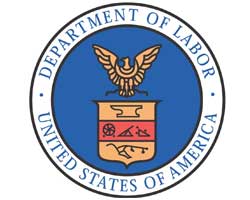Roof Fall Accidents Decline, But Remain Leading Cause of Coal Miner Injuries

July 6, 2017 - Improvements in roof control technology in underground coal mines have significantly reduced accidents involving roof and rib falls or coal bursts, but such accidents remain a leading cause of injuries, reports the U.S. Department of Labor’s Mine Safety and Health Administration. Since 2013, roof and rib falls or coal bursts led to the deaths of five continuous mining machine operators, and injured 83 other operators.
To increase awareness among coal miners and mine operators of roof and rib fall hazards, MSHA recently launched its annual Preventive Roof/Rib Outreach Program.
The 2017 PROP program – which runs through September – focuses on continuous mining machine operator safety. It includes informational posters developed by MSHA and distributed to underground coal mines during regular inspections, and discussions with groups of working miners on mine safety. Agency inspectors are specifically addressing best practices for preventing roof fall accidents, which include the following:
– Closely monitor coal rib deterioration which may occur after mining.
– Install rib bolts, which provide the best protection against rib falls.
– Follow the approved roof control plan to address adverse conditions that may be present.
– Use straps, pizza pans or screen wire mesh where loose roof/ribs may be encountered.
– Conduct thorough examinations and watch for changing roof/rib conditions.
– Ensure that pillar dimensions and mining methods are suitable for the conditions and roof/rib control methods are adequate for the depth of cover.

